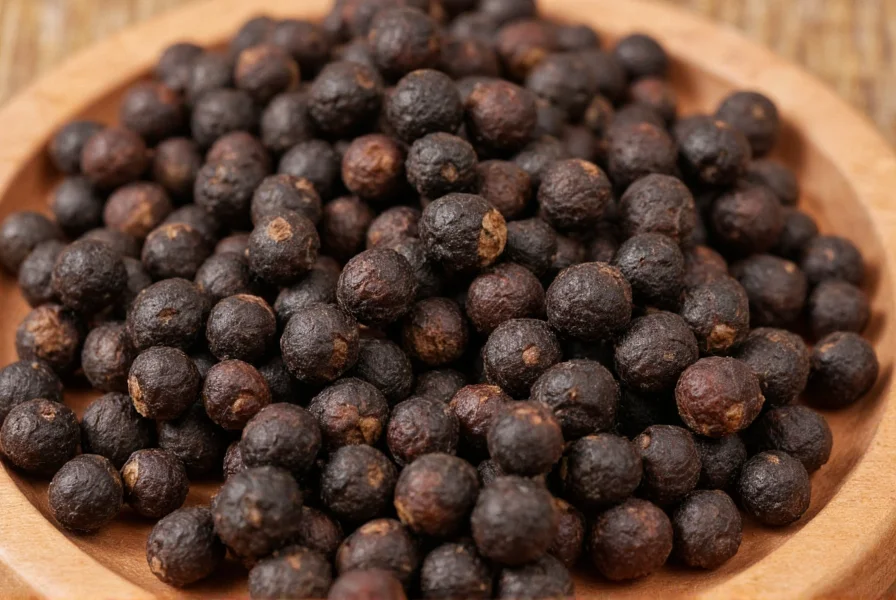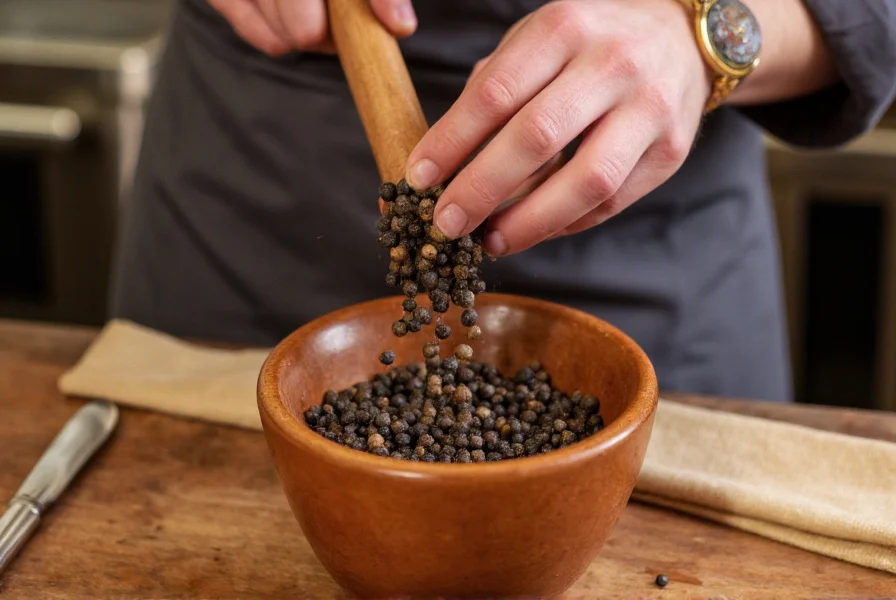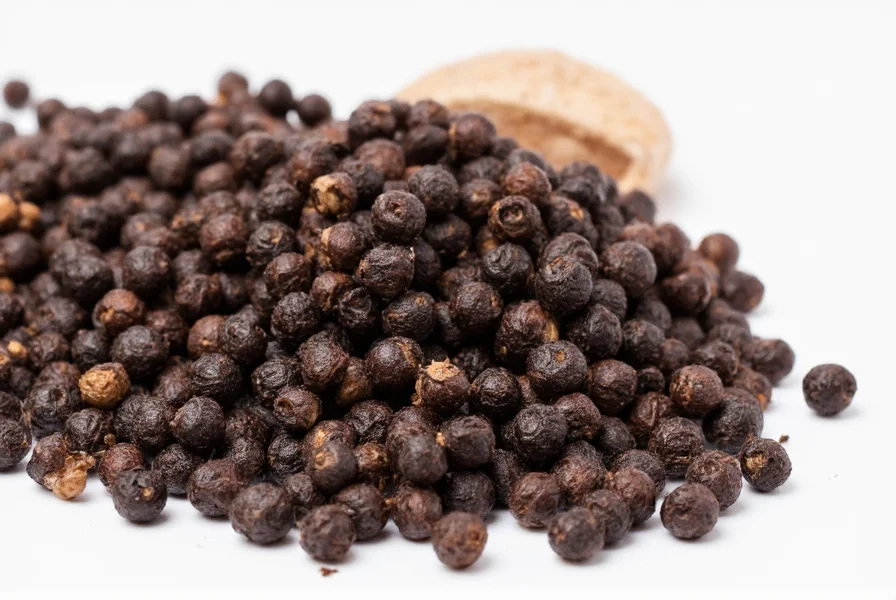For millennia, black peppercorn has reigned as the world's most traded spice, earning the nickname "black gold" during medieval times. Today, this versatile seasoning remains a kitchen staple across global cuisines, but understanding its nuances can transform your cooking from ordinary to extraordinary. Let's explore what makes this humble spice so remarkable.
The Botanical Background of Black Peppercorn
Scientifically known as Piper nigrum, black peppercorn comes from a flowering vine native to South India's Malabar Coast. The plant produces small, green berries that turn red when fully ripe. Black peppercorns are harvested when the berries are still green and unripe, then sun-dried for about two weeks. During this drying process, the outer layer (pericarp) enzymatically oxidizes, turning the peppercorns black while developing their characteristic pungency.
This careful harvesting and processing distinguishes black peppercorn from other pepper varieties. White peppercorns come from the same plant but are allowed to fully ripen before the outer layer is removed. Green peppercorns are picked while still unripe and preserved without drying, while red peppercorns are fully ripe berries that are either freeze-dried or brined.

Black Peppercorn vs White Peppercorn: Understanding the Differences
Many home cooks wonder about the practical differences between black and white peppercorn. The distinction goes beyond mere appearance:
| Characteristic | Black Peppercorn | White Peppercorn |
|---|---|---|
| Harvest Time | Unripe (green) berries | Fully ripe (red) berries |
| Processing | Sun-dried with outer layer intact | Outer layer removed before drying |
| Flavor Profile | Sharp, complex, floral, with pronounced heat | Milder, earthier, less complex |
| Culinary Best Uses | Most savory dishes, meats, sauces, marinades | Cream sauces, light-colored dishes, some Asian cuisines |
When selecting between black peppercorn and white peppercorn, consider both visual and flavor implications. Black peppercorn's stronger flavor makes it ideal for robust dishes like steak rubs or hearty stews, while white peppercorn works better in dishes where black specks would be visually disruptive, such as béchamel sauce or potato salad.
Maximizing Flavor: Culinary Applications of Black Peppercorn
The timing and method of adding black peppercorn to your dishes significantly impacts the final flavor. For maximum aromatic complexity, add whole peppercorns early in the cooking process for soups, stews, and braises. The extended cooking time allows the volatile oils to infuse throughout the dish without becoming overly sharp.
For immediate heat and pronounced pepper flavor, freshly grind black peppercorns directly onto finished dishes. This technique works particularly well for:
- Steaks and grilled meats (apply before searing)
- Roasted vegetables (toss with oil and freshly ground pepper before roasting)
- Simple pasta dishes (finish with freshly ground pepper and olive oil)
Chefs specializing in regional cuisines often have specific black peppercorn techniques. In French cuisine, poivre mignonette features coarsely cracked black peppercorns in vinegar-based sauces. Indian cuisine frequently uses whole black peppercorns in tempering oils to release their essential oils before adding other spices.
Health Benefits of Black Peppercorn: Beyond Flavor
Modern research confirms what traditional medicine systems have known for centuries—black peppercorn offers notable health benefits primarily due to piperine, its active compound. Studies show that piperine enhances the bioavailability of certain nutrients and medications by up to 2000%, making it particularly valuable when consumed with turmeric (curcumin) or other beneficial compounds.
Additional research-supported benefits of black peppercorn include:
- Antioxidant properties that combat oxidative stress
- Potential digestive benefits by stimulating digestive enzyme production
- Anti-inflammatory effects that may support joint health
- Moderate antimicrobial properties
While black peppercorn isn't a miracle cure, incorporating it regularly into your diet as part of a balanced approach to eating can contribute to overall wellness. The concentration of beneficial compounds remains highest in whole peppercorns compared to pre-ground versions.

Choosing and Storing Quality Black Peppercorn
Not all black peppercorns deliver equal quality. When selecting black peppercorns, look for these indicators of freshness and quality:
- Uniform dark color (avoid batches with many light-colored peppercorns)
- Distinctive aroma when crushed (should smell sharp and complex)
- Heavy weight for their size (indicates moisture content and density)
- Minimal dust or debris in the container
For optimal storage, keep black peppercorns in an airtight container away from light, heat, and moisture. Whole peppercorns maintain their potency for 2-3 years when stored properly, while pre-ground pepper loses its volatile oils within 4-6 months. Never store peppercorns near your stove or in clear containers on a spice rack exposed to sunlight.
Grinding Techniques for Maximum Flavor Impact
The method you use to grind black peppercorn dramatically affects both flavor release and texture in your dishes. Consider these approaches:
- Coarse grind: Ideal for steak rubs and hearty dishes where visible pepper texture enhances the eating experience
- Medium grind: The most versatile option for general cooking and finishing dishes
- Fine grind: Best for delicate sauces and dishes where smooth texture matters
- Whole peppercorns: Perfect for infusing flavor into liquids without overwhelming heat
For the freshest flavor, invest in a quality pepper mill that uses a ceramic or carbon steel grinding mechanism. These maintain their sharpness longer than cheaper plastic mechanisms. Always grind peppercorns immediately before use to capture the full aromatic profile that dissipates within minutes of grinding.
Regional Varieties and Their Unique Characteristics
While all black peppercorns come from Piper nigrum, regional growing conditions create distinct flavor profiles that discerning cooks appreciate:
- Malabar black peppercorn (India): The original variety with balanced heat and complex floral notes
- Lampang peppercorn (Thailand): Brighter acidity with citrus undertones
- Sarawak peppercorn (Malaysia): Milder heat with distinctive eucalyptus notes
- Madagascar black peppercorn: Intense heat with wine-like fruitiness
- Vietnamese black peppercorn: Robust heat with earthy, mushroom-like undertones
Understanding these regional differences allows you to select the perfect black peppercorn for specific dishes. For example, Malabar works beautifully in classic French sauces, while Vietnamese peppercorns enhance Asian stir-fries with their earthy complexity.
Frequently Asked Questions
What makes black peppercorn different from other pepper varieties?
Black peppercorn comes from unripe berries of the Piper nigrum vine that are sun-dried with their outer layer intact. This processing creates a more complex flavor profile compared to white peppercorn (made from ripe berries with the outer layer removed) or green peppercorn (unripe berries preserved without drying). The enzymatic oxidation during drying gives black peppercorn its characteristic pungency and floral notes.
How should I store black peppercorn to maintain freshness?
Store whole black peppercorns in an airtight container away from light, heat, and moisture. A dark cupboard works better than a clear spice rack. Properly stored, whole peppercorns maintain their potency for 2-3 years. Avoid storing near your stove or in the refrigerator, as temperature fluctuations and moisture degrade quality. Never buy pre-ground pepper if you want maximum flavor and health benefits.
Why is freshly ground black peppercorn superior to pre-ground?
Freshly ground black peppercorn contains significantly higher levels of volatile aromatic compounds that dissipate quickly after grinding. Studies show that pre-ground pepper loses up to 90% of its essential oils within 15 minutes of grinding. These compounds contain the piperine responsible for both flavor and health benefits like improved nutrient absorption. For maximum flavor impact and nutritional value, always grind peppercorns immediately before use.
Can black peppercorn really improve nutrient absorption?
Yes, scientific research confirms that piperine, the active compound in black peppercorn, enhances the bioavailability of certain nutrients. Studies show it can increase the absorption of curcumin (from turmeric) by up to 2000%, and improve absorption of selenium, beta-carotene, and certain B vitamins. This is why traditional spice blends often combine black pepper with other beneficial ingredients—it's not just for flavor but for maximizing nutritional benefits.
When should I use whole black peppercorns versus freshly ground?
Use whole black peppercorns when you want to infuse flavor into liquids without overwhelming heat, such as in soups, stews, pickling brines, or marinades. Add them early in the cooking process. Use freshly ground black peppercorn when you want immediate heat and pronounced pepper flavor, particularly as a finishing touch on dishes like steaks, roasted vegetables, or simple pasta preparations. The grinding process releases volatile oils that provide the characteristic sharpness associated with black pepper.











 浙公网安备
33010002000092号
浙公网安备
33010002000092号 浙B2-20120091-4
浙B2-20120091-4